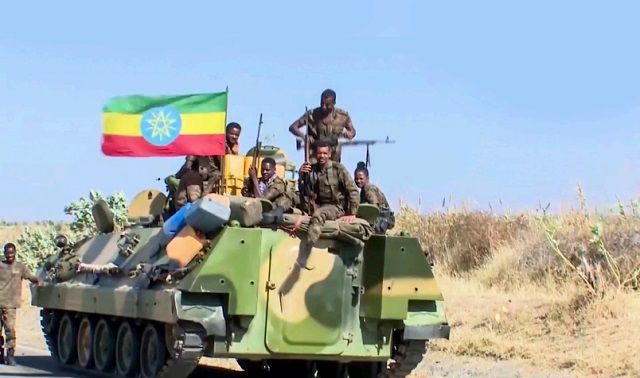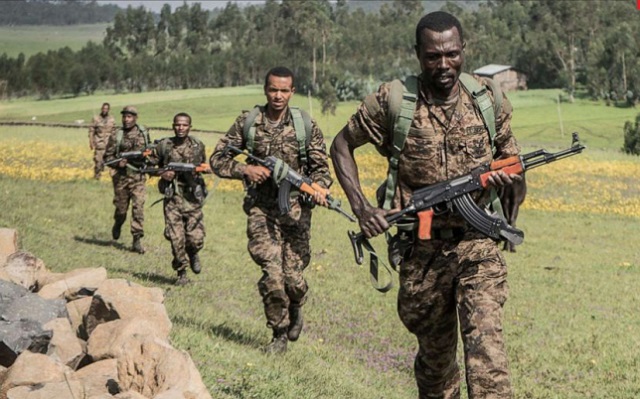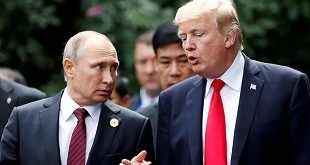
America piles pressure on PM Abiy
ETHIOPIA | THE INDEPENDENT | On Nov.05, most international news agencies carried one major story about developments in the war in Ethiopia. ‘Nine Ethiopian factions to form alliance against government,’ proclaimed the media agencies.
Most listed only the Oromo Liberation Army (OLA), a splinter from the Oromo Liberation Front and the Agaw Democratic Movement (ADM), the Afar Revolutionary Democratic Unity Front, Benishangul People’s Liberation Movement, Gambella Peoples Liberation Army, Global Kimant People Right and Justice Movement/ Kimant Democratic Party, Sidama National Liberation Front and Somali State Resistance.
The new bloc, which calls itself the United Front of Ethiopian Federalist and Confederalist Forces, seeks to establish a “safe transition in the country” to replace the current ruler, Prime Minister Abiy Ahmed, according to one of the new bloc’s organisers, Yohanees Abraha.
He told CNN late on Nov.04 that the alliance will be formed at a signing event in Washington, DC, on Nov.05.
A spokesman for the Oromo Liberation Army, Odaa Tarbii, confirmed the new alliance. When asked whether it meant to force Abiy out, he replied that it depended on Ethiopia’s government and events over the coming weeks. “Of course we prefer if there’s a peaceful and orderly transition with Abiy being removed,” he said.
“The goal is to be as inclusive as possible. We know this transition requires all stakeholders,” he added. But as for members of the prime minister’s Prosperity Party, “there would have to be a process. Many members would have to go through investigation, possibly be prosecuted” for crimes related to the war.
Reports of the alliance broke while U.S. Special Envoy to the Horn of Africa, Jeffrey Feltman, was in Addis Ababa for meeting with senior government officials amid calls for an immediate cease-fire and talks that would possibly see Prime Minister Abiy Ahmed removed from power peacefully.
Feltman met the African Union Commission chairperson, Moussa Faki, the Ethiopian Defence Minister, finance minister and deputy prime minister.
On Nov.04, U.S.Secretary of State, Antony Blinken, had tweeted that “The conflict in Ethiopia must come to an end. Peace negotiations should begin immediately without preconditions in pursuit of a ceasefire.”
Abiy’s spokesperson, Billene Seyoum, accused the international media of being “overly alarmist” in its coverage of Ethiopia.
“Perpetuating terrorist propaganda as truth from offices far off and detached from the ground is highly unethical,” she said in a tweet.
At this point, it was clear that the US and other western capitals were piling pressure on Abiy to declare a ceasefire and get involved in talks that would likely end in his ouster from power.
But Abiy’s government, which has declared a six-month state of emergency that could empower officials to conscript “any military age citizen who has weapons,” pledged on Nov.04 to fight on, in an apparent rebuke of the international ceasefire calls.
“This is not a country that crumbles under foreign propaganda! We are fighting an existential war!” the government’s communications office said on Facebook. “Our people, realising that we are in the final chapter of saving Ethiopia, should continue their heroic struggle,” it added.
Abiy vowed to “bury” his government’s enemies in a Facebook post on Oct.31. But Facebook removed the post by the Ethiopia’s prime minister accusing him of “inciting and supporting violence.”
 “As the ongoing conflict in Ethiopia intensifies, we are committed to helping keep people safe and preventing online and offline harm through our platforms,” the company said as diplomats stepped up attempts to instigate a ceasefire.
“As the ongoing conflict in Ethiopia intensifies, we are committed to helping keep people safe and preventing online and offline harm through our platforms,” the company said as diplomats stepped up attempts to instigate a ceasefire.
“We were made aware of a post by Ethiopia’s prime minister and removed this for violating our policies against inciting and supporting violence. At Meta we remove content from individuals or organisations that violates our community standards, no matter who they are.”
The Al Jazeera news agency quoted David Zounmenou, a senior research consultant at the Institute of Security Studies, saying the continuation of the war in Africa’s second most-populous country could have a huge effect on regional peace.
“It is not only a concern for Ethiopia but the whole of the Horn of Africa. A speedy discussion to resolve the conflict is necessary,” Zounmenou said.
“All regional attempts, particularly from the African Union and the South African president, to US President Joe Biden to call upon leaders to engage in dialogue have remained without any impact,” he added. “Ethiopian leaders, particularly in Addis Ababa, believe they are capable to end the war by crushing their enemies.”
Ugandan President Yoweri Museveni announced that the East African bloc; the Intergovernmental Authority on Development (IGAD), would be meeting on Nov. 16 to discuss the war in Ethiopia.
Kenyan President Uhuru Kenyatta urged the rival parties to lay down their arms and find a path to peace.
“The fighting must stop!” he said in a statement.
The current conflict started in November 2020 when forces loyal to the TPLF, including some soldiers, seized military bases in Tigray. In response, Abiy sent more troops to the northern region.
Abiy sent troops into Tigray last November, accusing its governing party, the TPLF, of mounting surprise attacks on military bases in the region. The TPLF said it acted because the military was preparing to strike after the region held an election in September 2020 in defiance of federal orders.
Forces from Amhara, Ethiopia’s second most-populous region, mobilized in support of Abiy’s government. Tigray and Amhara have a long-running border dispute, and Amhara took control of territory in the west of Tigray. Violence has also flared along the Oromo-Amhara border.
The European Union has joined the chorus of bodies calling for a ceasefire and U.N. Secretary-General Antonio Guterres said he had spoken to Prime Minister Abiy Ahmed on Nov.03 and offered to help create the conditions for a dialogue.
 The Independent Uganda: You get the Truth we Pay the Price
The Independent Uganda: You get the Truth we Pay the Price



